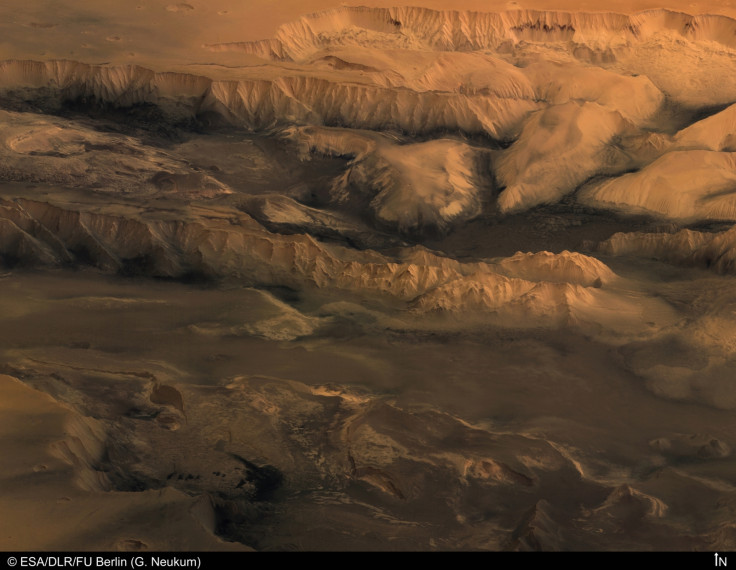Volcanoes Caused Brief Periods of Warmth and Water on Mars, Says Study

Warmth and water flow on Mars were restricted to brief periods of volcanic activity that spewed tons of greenhouse gases, including sulphur dioxide gas into the atmosphere.
A study, by scientists from Brown University and Israel's Weizmann Institute of Science, has put paid to any images of a tropical paradise on the Red Planet but throws light on where to look for the early Martians.
Combining the effect of volcanism with the latest climate models of early Mars, the study suggests that periods of temperatures warm enough for water to flow most probably lasted for only tens or hundreds of years at a time.
A dim sun that existed billions of years ago combined with a thin atmosphere unable to retain heat required to keep water flowing have left scientists unable to explain the abundant evidence of water that once flowed on the surface of Mars.
The present theory shows a way to reconcile both, says James W Head, professor of earth, environmental and planetary sciences at Brown University and co-author of the new paper with Weizmann's Itay Halevy.
"This new analysis provides a mechanism for episodic periods of heating and melting of snow and ice that could have each lasted decades to centuries."
Geological features on Mars suggest water flow dates to around 3.7 billion years ago, when massive volcanoes are thought to have been active and huge lava outpourings occurred.
But volcanism on earth leads to cooling by the sulphur aerosols released in eruptions. By spreading across the atmosphere, they reflect a part of the sunlight.
However, on the dusty Martian landscape, the sulphuric acid would have stuck to dust particles and been unable to reflect sunlight. In addition, the sulphur dioxide being a greenhouse gas would have heated the atmosphere, say Head and Halevy.
The team compares the early Martian situation to what prevails today in Antarctica, where the average yearly temperature is way below freezing, but peak summer daytime temperatures can exceed the melting point of water, forming transient streams, which then refreeze.
On Mars, this heating was provided by the volcanoes. But once the volcanoes became dormant, the flow stopped.
Also picking cues from Antarctica, where life in the form of algal mats, bides for the episodic infusion of water to bloom, Head says that the ancient and currently dry and barren river and lake floors on Mars may harbour the remnants of primitive Martian life, if it ever existed.
Studies have hinted at the possibility of life during warmer periods on Mars.
© Copyright IBTimes 2025. All rights reserved.





















